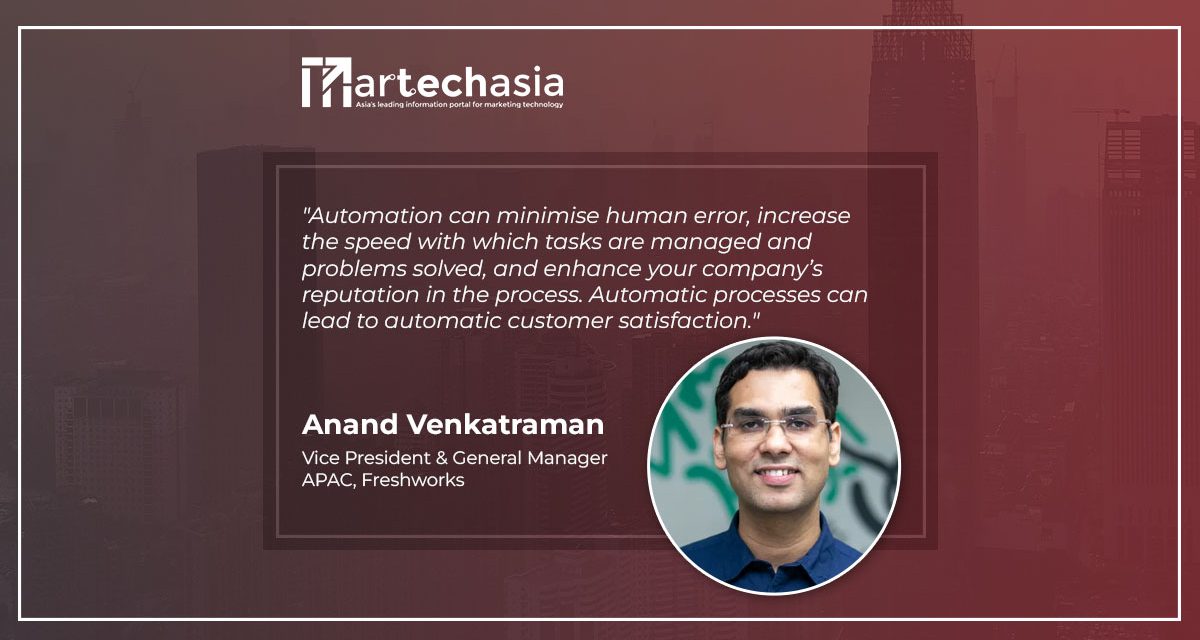Here are seven areas where automation can work to improve the customer experience.
Automation software or Robotic Process Automation (RPA) technology comprises programmes aimed at improving the efficiency and productivity of business processes. They seek to automate repetitive and rule-based tasks to allow for the reallocation of the workforce to more complex or value-adding business activities.
Robotic hardware has long been employed to speed up manufacturing and production-based industries. Indeed, it’s a staple on the factory floor. By contrast, software robots are a relatively new phenomenon, and part of the wider trend in business toward greater automation of processes.
While this form of automation is comparatively new, its uptake hasn’t been slow. In fact, businesses have been so quick to embrace software automation that it’s predicted 85% of large organizations will have deployed RPA in some form by 2022.
Process automation can also be a cost-effective asset for smaller and mid-size businesses for its many time-saving applications. Consider how intelligent automation might be used to improve your customer experience. Implementing an RPA solution can offer your consumers greater choice in the support you offer, a more tailored experience, and better consistency in the services you provide.
Here are seven areas where automation can work to improve the customer experience:
- Issue resolution
90% of Singaporeans access the internet. They spend over eight hours a day online. 3.3 million shop online regularly, delivering revenues of almost USD3 billion in 2021. 95% use mobile chat apps. With their desire for a quick response time and online accessibility, it makes sense that consumers would appreciate an automated customer service experience.
Options like live chat support or artificial intelligence automation software, such as chatbots, can provide instant issue resolution to consumers, and thus improve their overall customer experience. Explore the option of using a chatbot to answer common queries or to provide real-time shipping estimates.
As a tool for screening customer inquiries, chatbots can allow you to respond to multiple queries simultaneously—automating the most straightforward answers and forwarding more complex concerns to real-life agents.
Faster response times, fewer miscommunications, and a streamlined, easy-to-use service will improve customer satisfaction. Such positive interactions with your brand will both encourage repeat purchases and increase the likelihood of referrals, driving up sales. - Convenience
As more buyers see the customer experience as a differentiating factor between competing companies, it pays to improve the convenience of your business’s shopping experience.
Technology solutions such as intelligent document processing (IDP) use artificial intelligence (AI) methods like machine learning (ML) and natural language processing (NLP) to streamline the processing of data from documents. It can categorize forms, extract relevant information, and even read handwriting.
Say you’re a retail business receiving a high volume of sales orders. Whether you’re facilitating B2B transactions or selling directly to consumers, electronic forms could bring efficiencies in the process while also eliminating the potential for human error.
Having direct and immediate access to a customer’s order history can also lead to quicker problem resolution. Consider using IDP to manage your ecommerce returns processing. Here, you could reduce the cost to your business of manual returns and, at the same time, impress your consumer with the efficiency of your service. - Personalized support
Automation can also assist to personalize the ecommerce customer journey and target the specialized interests of your customers.
Automated email platforms, bulk email services and customer relationship management (CRM) systems can be used to send out targeted offers to consumers based on their online interaction with your brand.
Alternatively, you can use these tools to personalize recommendations, send abandoned cart reminders, and follow up with customers after they’ve made purchases. All these practices can differentiate your brand by personalizing the customer experience. - Bespoke marketing
Another way to personalize the customer experience is through tailored marketing campaigns. RPA-based marketing tools can use data analytics to determine where to target advertisements based on demographic variables like age, location, and gender. This means that your campaigns will only pinpoint the most relevant consumers, improving the buyer’s journey and the likelihood of your adverts resulting in sales. - Consistent sales approach
Using automation tools like AI in customer service can transform your customer experience by providing consistency in service. Ensuring that your customers receive the same experience during every interaction can boost retention and also increase confidence in your brand.
Tools like AI can use analytics to monitor consumer emotions throughout their sales engagement experience, and therefore adjust your website performance in line with how users interact with it.
RPA methods can provide your users with more self-service options and, therefore, the opportunity for customers to identify solutions to their own issues. This will allow for a more positive consumer experience. - Avoid problems
Identifying and solving problems is quick work for AI. Automating business processes can solve those that arise from tasks like manual data entry. This not only reduces the cost to your business of correcting errors, but improves the customer experience at the same time. The potential for mistakes that could lead to a negative interaction, such as in pricing or supply, is eliminated.
Online scheduling software can be used to avoid problems for service-led businesses. For example, in double booking or forgetting meetings. Emailed reminders and synced calendars will demonstrate to clients that they’re your priority. - Supply and demand
Integrating RPA technology into your business can be key to its digital transformation. Analytics collected by an automated process from a large amount of sales data can provide valuable insights to improve customer retention.
Sales forecasting and supply and demand predictions can help to deliver the right services to your clients at the right time. Not only will this improve your organization’s productivity, but it will show your customers that you’re ready and able to meet their evolving needs.
Wherever you choose to integrate robotic process automation (RPA) into your business, be it through customer service support or electronic documents, these tools can help deliver an excellent consumer experience while reducing your operational costs and improving productivity.
Automation can minimise human error, increase the speed with which tasks are managed and problems solved, and enhance your company’s reputation in the process. Automatic processes can lead to automatic customer satisfaction.



















